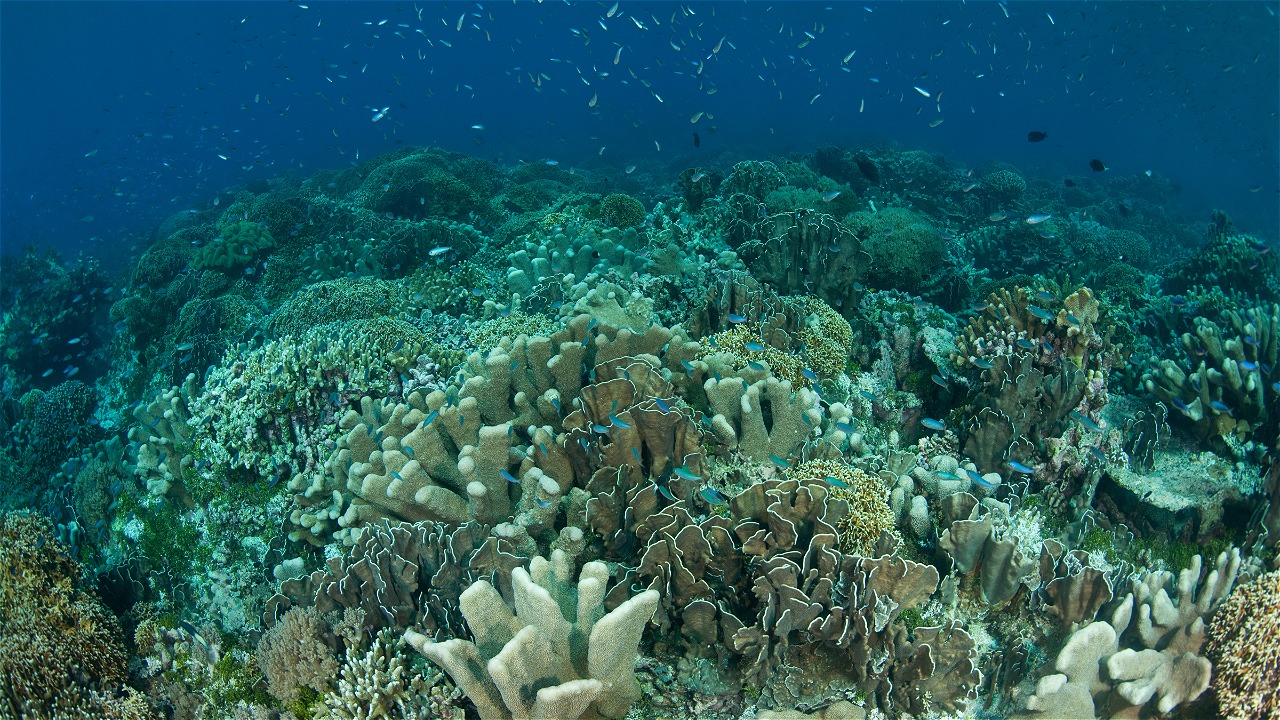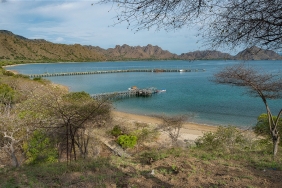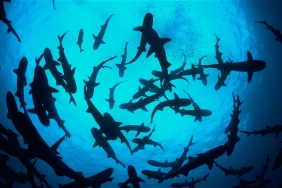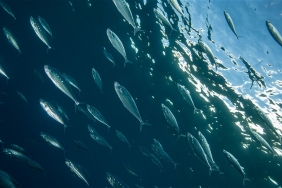CORAL REEF REHABILITATION EFFORTS IN SAMBORU HAMLET, KATALOKA, HAVE SHOWN RESULTS
By: Aliana Nafsal, Fisheries Officer, WWF-Indonesia
"There is already an encrusting coral that grows over the surface of the burrow rock, and an Acropora coral that grows by 1 cm," Tufail Tuhuteru said (27/09). He is the head of the Batnata Group in Samboru Hamlet, Petuanan Kataloka, Gorom Island, East Seram Regency, Maluku.
Tufail dived into the coast of Samboru Hamlet in order to monitor the location of coral reef rehabilitation by this WWF-Indonesia-assisted fishermen group. Since December 2015, the Batnata group has applied the rockpile method to improve the coral reef ecosystem.
With this method, they bury concrete blocks and stone burrows 3-5 meters underwater, to strengthen the structure of fragile coral habitats, and build new homes for corals. The burrow stones - porous limestone, stacked into 1 block, each 1 meter in length, width, and height. The Batnata group also assembled 16 20x35 cm bricks that they made themselves.
"After 1 year and 8 months, the results are in line with our expectations!" he said enthusiastically. "Although, in the brick rockpile, the growth is lagging behind that of the burrow rock - the growth of the coral's juvenile attachment is slow because the brick is solid," he added.
To ensure that the rockpile has had a positive impact both ecologically and socio-economically, the development of the rockpile should be monitored regularly. Initial monitoring is done a month after the rockpile is completed.
The results of the monitoring showed a significant increase in the presence of reef fish at the location of the rockpile compared to before the rockpile. "Fishing at the rockpile location, we can catch up to tens of fish per net," said the community. Fish obtained when using gill nets around the rockpile are lalosi (Caesio crysozoma), and when using fishing rods, people usually catch jackfruit seed fish (Upeneus sp), tefar (Lethrinus sp).
What exactly moved the Batnata Group to improve their sea? In 1999-2003, many fishermen still used bombs and tranquilizers - damaging the coral reefs of Gorom Island, to the coast of Samboru Hamlet.
Those who then realized the importance of protecting Gorom Island's nature - took the initiative to form the Batnata Group. A commitment was born to repair the coral substrate that had become rubble (rubble) in order to restore the coral ecosystem as a place for fish to breed. Not only coral rehabilitation efforts, but also community awareness in improving nature. Both run in parallel, so that fish resources remain sustainable into the future.
The Batnata group plans to continue rehabilitation with this rockpile method. "We will go back to collecting burrow stones, to be planted again on the coast of Samboru Hamlet," said Tufail excitedly, making me who heard him enthusiastic. Hopefully, the coastal ecosystem of Gorom Island and its surroundings will be improved faster, for the sake of its people too.





